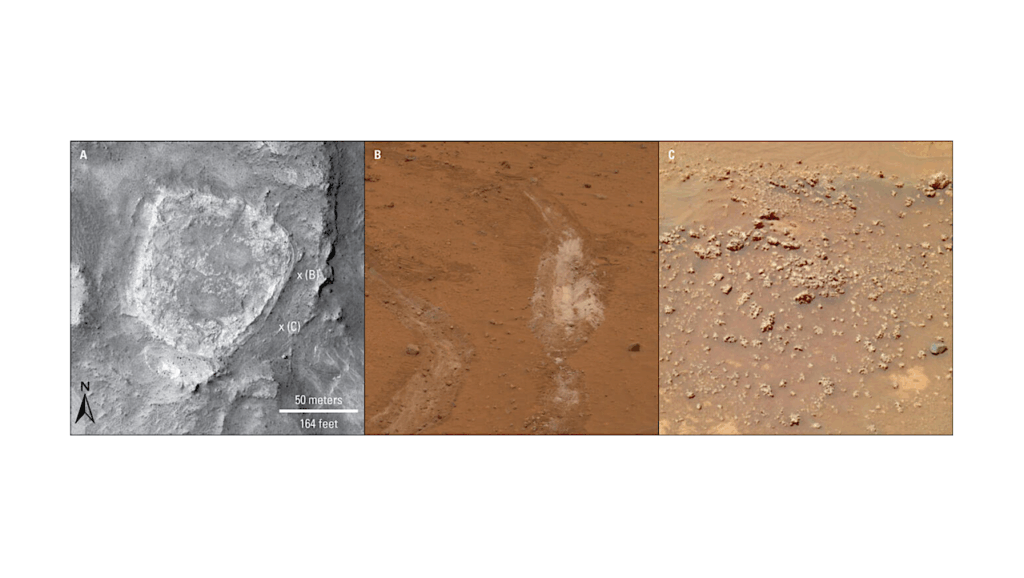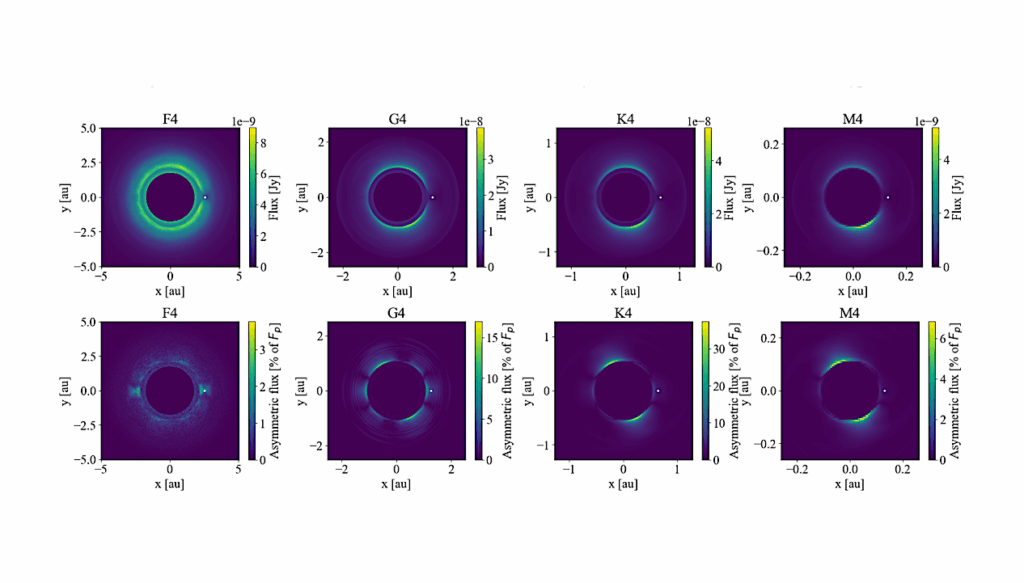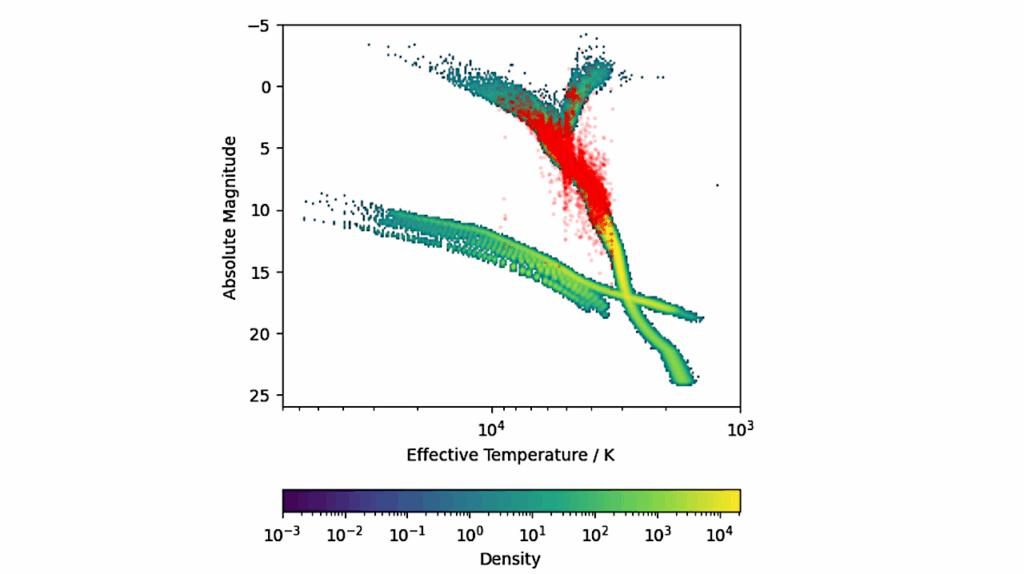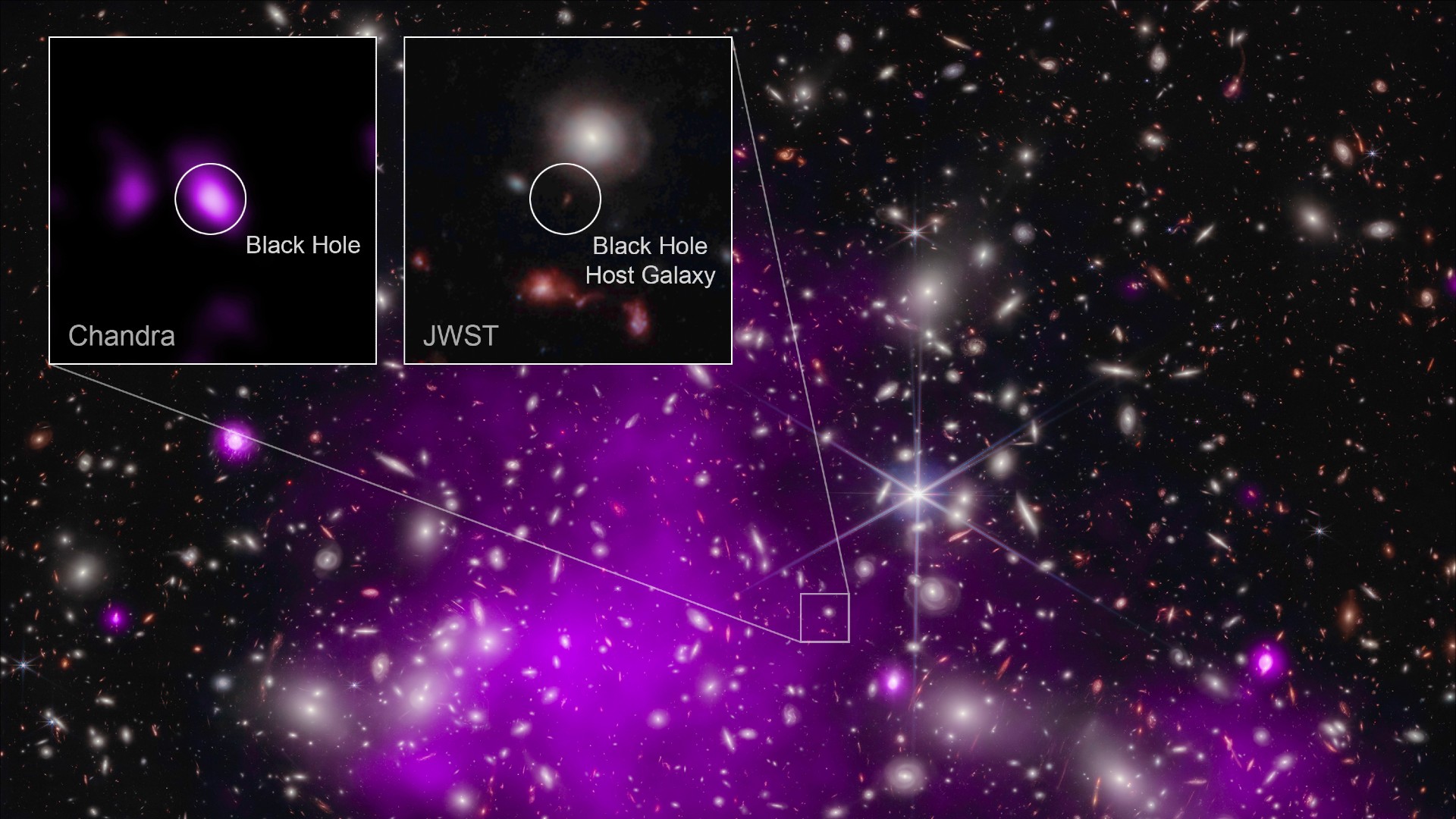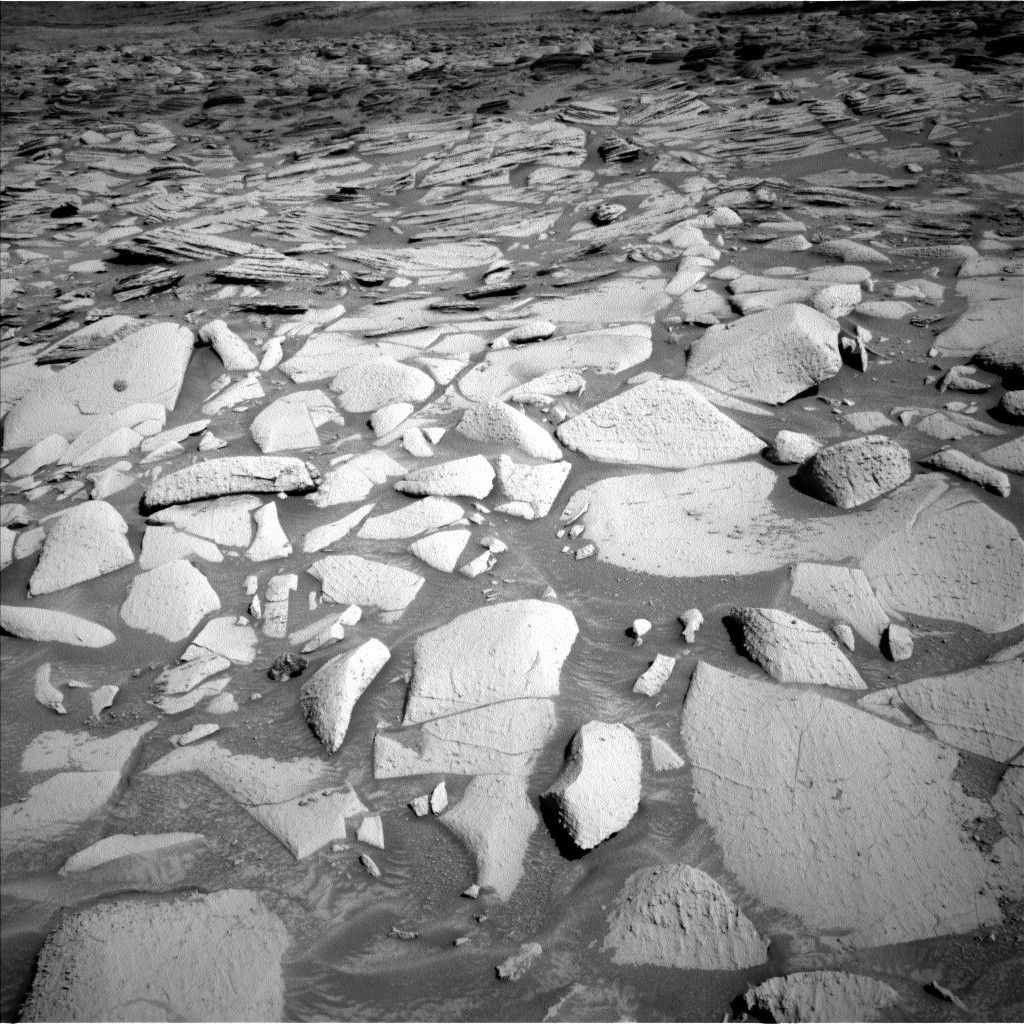Now Reading: JWST’s Sharper View Of EX Lup: Cold Water From Ice Sublimation During Accretion Outbursts
-
01
JWST’s Sharper View Of EX Lup: Cold Water From Ice Sublimation During Accretion Outbursts
JWST’s Sharper View Of EX Lup: Cold Water From Ice Sublimation During Accretion Outbursts
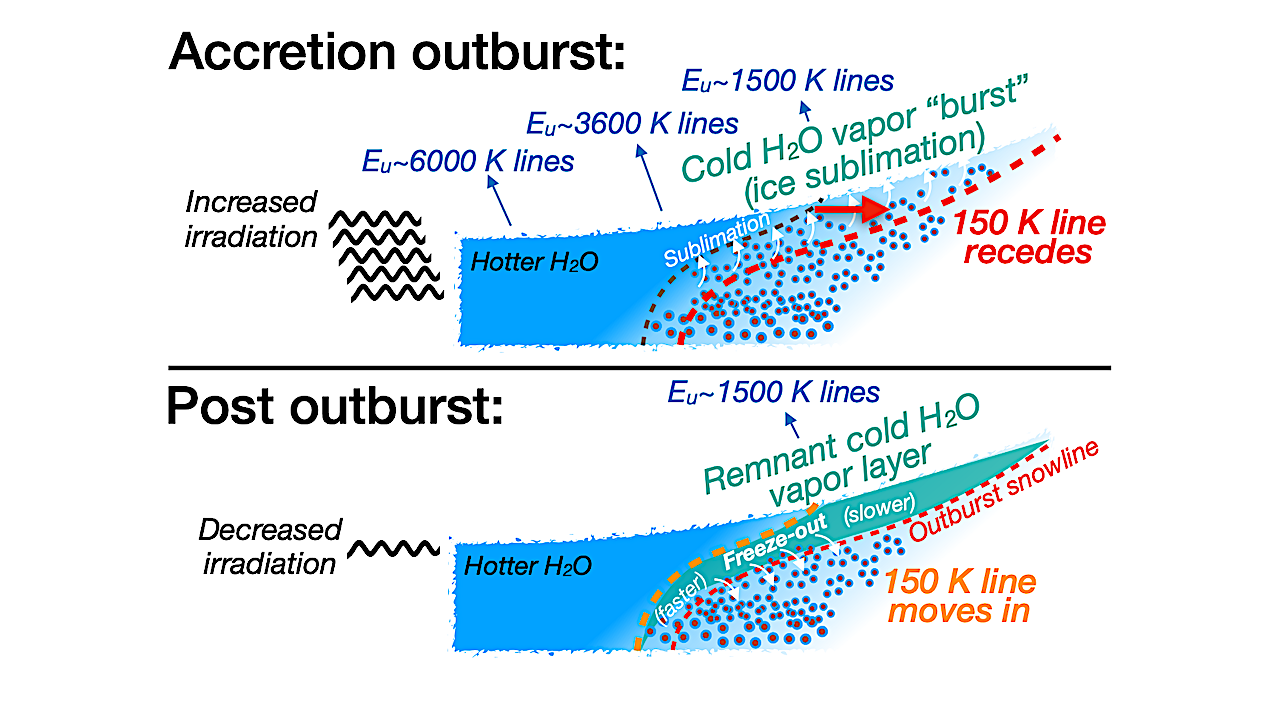

Illustration of the proposed interpretation for the water emission variability observed in EX Lup during and after accretion outbursts. The increased irradiation and heating of the inner disk during outburst is proposed to push the snowline to larger radii, triggering a burst of cold water vapor from ice sublimation. A remnant layer of cold water vapor is left behind due to the long freeze-out timescales in the disk surface after outburst, to explain the increased cold water excess in the MIRI epochs analyzed in this work. — astro-ph.EP
The unstable accretion phases during pre-main-sequence evolution of T Tauri stars produce variable irradiation and heating of planet-forming regions.
A strong accretion outburst was observed with Spitzer-IRS in 2008 in EX Lup, the prototype of EXor variables, and found to increase the mid-infrared water and OH emission and decrease organic emission, suggesting large chemical changes. We present here two JWST-MIRI epochs of quiescent EX Lup in 2022 and 2023 obtained over a decade after the 2008 outburst and several months after a moderate burst in 2022.
With JWST’s sharper spectral view, we can now analyze water emission as a function of temperature in the two MIRI epochs and, approximately, also in the previous Spitzer epochs. This new analysis shows a strong cold water vapor “burst” in low-energy lines during the 2008 outburst, which we consider clear evidence for enhanced ice sublimation due to a recession of the snowline, as found in protostellar envelopes.
JWST shows that EX Lup still has an unusually strong emission from cold water in comparison to other T Tauri disks, suggesting > 10-yr-long freeze-out timescales in the inner disk surface. EX Lup demonstrates that outbursts can significantly change the observed organic-to-water ratios and increase the cold water reservoir, providing chemical signatures to study the recent accretion history of disks.
This study provides an unprecedented demonstration of the chemical evolution triggered by accretion outbursts in the Class II phase and of the high potential of time-domain experiments to reveal processes that may have fundamental implications on planet-forming bodies near the snowline.

Mid-infrared spectral line variability observed with Spitzer-IRS (Banzatti et al. 2012) and JWST-MIRI (this work) in the T Tauri disk of EX Lup over ∼ 20 years (from 2005 with the SP1 epoch, to 2023 with the JW2 epoch). The two MIRI epochs are plotted in grey (JW1) and black (JW2) without offset, to demonstrate their similarity. The individual molecular models obtained for the JW2 epoch (Table 2) are shown in different colors, their sum in grey. The same models are shown as downgraded to the resolving power of Spitzer-IRS for comparison to the SP1 and SP2 data, with multiplication factors as labeled for each molecule; additional models for water and OH are shown on top of the SP2 epoch to explain the more complex structure observed (see text for details). The vertical dashed lines show the range where the line flux of organic molecules is measured for Figure 6. The lowest-energy lines covered by MIRI (Eu = 878–1448 K), which are more sensitive to the snowline region at T < 180 K, are marked with a star (see also Figure 5). — astro-ph.EP
Sarah A. Smith, Carlos E. Romero-Mirza, Andrea Banzatti, Christian Rab, Peter Abraham, Agnes Kospal, Rik Claes, Carlo F. Manara, Karin I. Oberg, Jeroen Bouwman, Fernando Cruz-Saenz de Miera, Joel D. Green
Comments: Accepted for publication in ApJ Letters
Subjects: Earth and Planetary Astrophysics (astro-ph.EP); Solar and Stellar Astrophysics (astro-ph.SR)
Cite as: arXiv:2504.13377 [astro-ph.EP] (or arXiv:2504.13377v1 [astro-ph.EP] for this version)
https://doi.org/10.48550/arXiv.2504.13377
Focus to learn more
Submission history
From: Andrea Banzatti Dr.
[v1] Thu, 17 Apr 2025 23:16:30 UTC (5,261 KB)
https://arxiv.org/abs/2504.13377
Astrobiology, Astrochemistry,
Stay Informed With the Latest & Most Important News
Previous Post
Next Post
-
 012024 in Review: Highlights from NASA in Silicon Valley
012024 in Review: Highlights from NASA in Silicon Valley -
 02Panasonic Leica Summilux DG 15mm f/1.7 ASPH review
02Panasonic Leica Summilux DG 15mm f/1.7 ASPH review -
 03How New NASA, India Earth Satellite NISAR Will See Earth
03How New NASA, India Earth Satellite NISAR Will See Earth -
 04And Thus Begins A New Year For Life On Earth
04And Thus Begins A New Year For Life On Earth -
 05Astronomy Activation Ambassadors: A New Era
05Astronomy Activation Ambassadors: A New Era -
06SpaceX launch surge helps set new global launch record in 2024
-
 07Space Force plans new ‘Futures Command’ amid pressure to speed up modernization
07Space Force plans new ‘Futures Command’ amid pressure to speed up modernization












